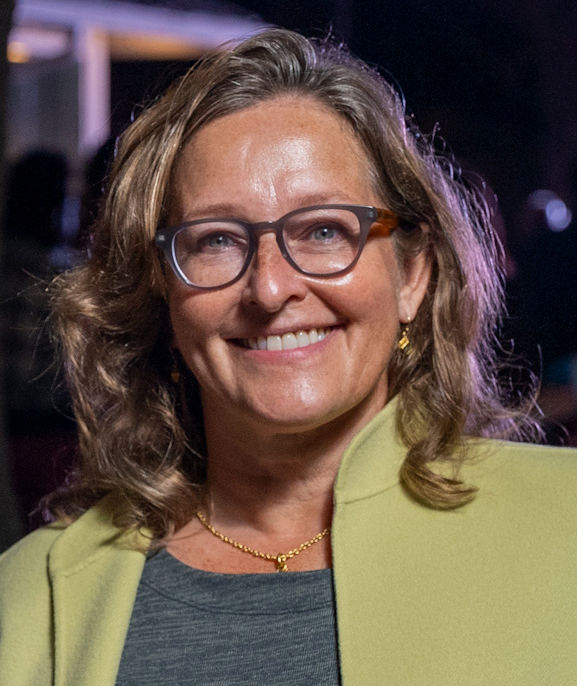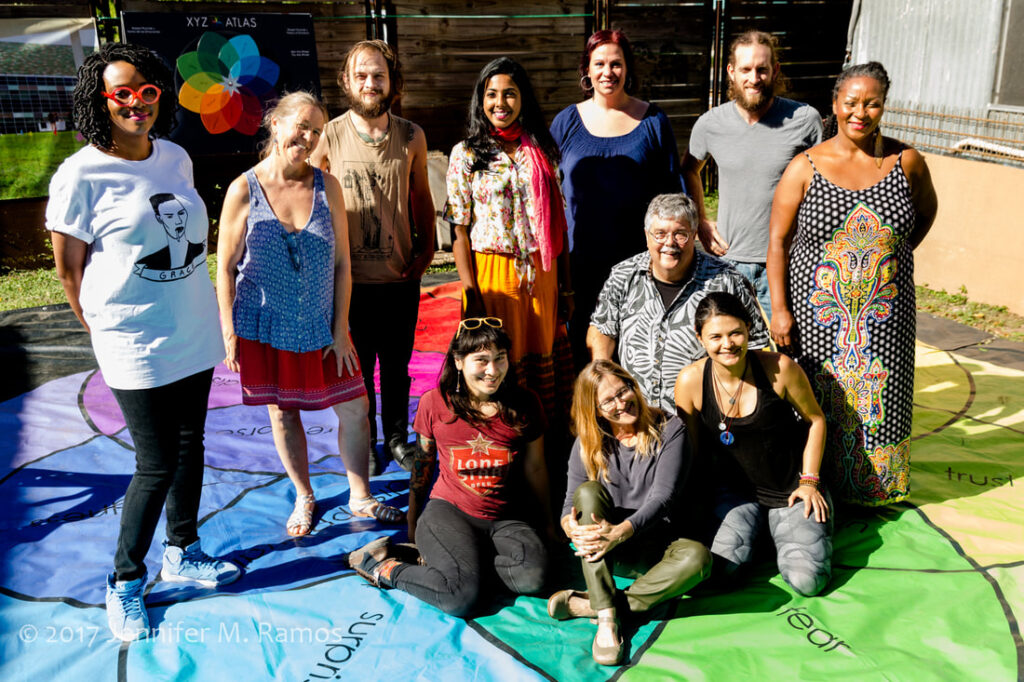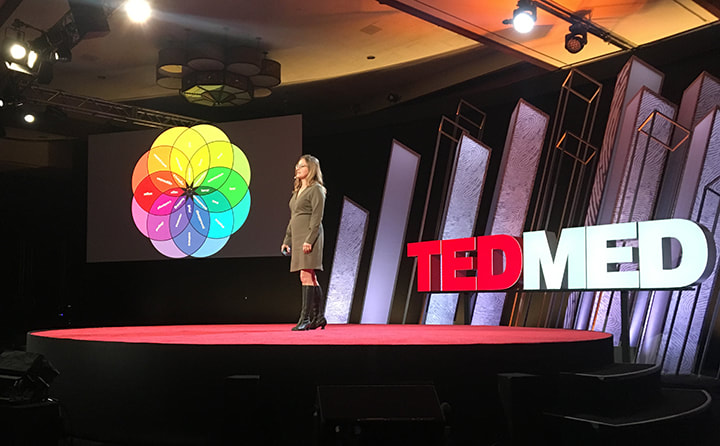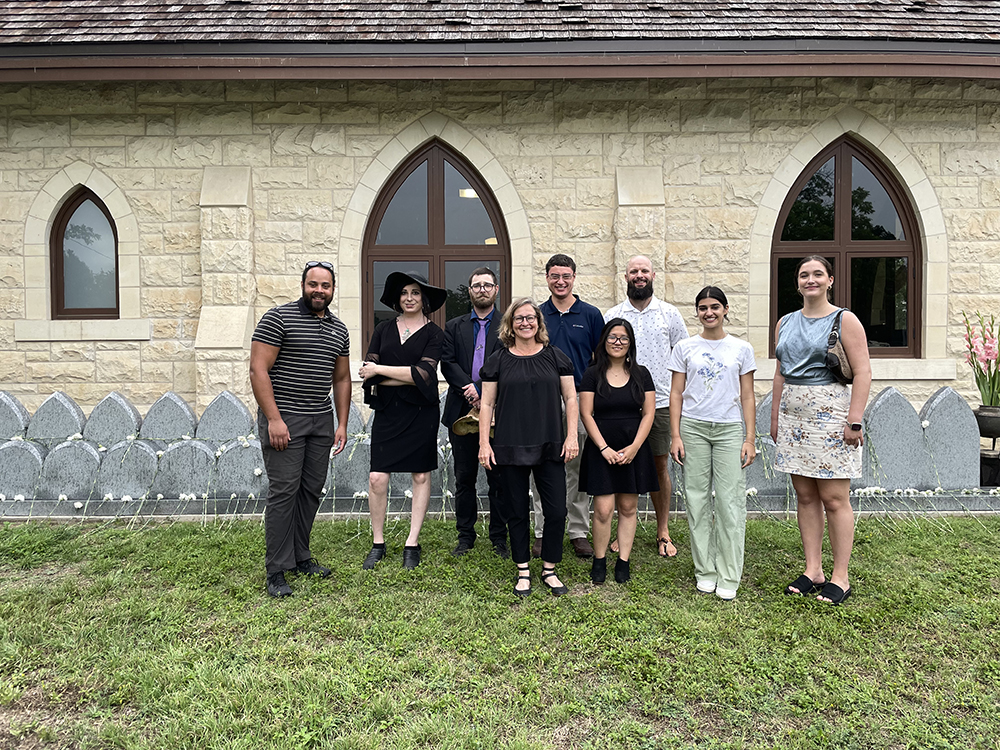Jennifer Chenoweth
By Forrest Preece
In my 78 years, I’ve known activists, thinkers, and lots of coasters. Then there are the explorers – the people with the binoculars set in front of their eyes, who focus on the horizon and head for the unknown. In that vein, Linda and I recently had lunch with Jennifer Chenoweth, the newly appointed division manager at The Austin History Center.
She seeks new truths and ways of looking at our environment and then she finds ways to reveal what she’s learned to the rest of us. I came away from our meal together inspired by her energy and her enthusiasm. I look forward to seeing her work on recording Austin’s history in a three-dimensional manner, incorporating the human element and personal feelings.
By her own account, Jennifer grew up as a largely unsupervised, feral child in Oklahoma City. For hours she would ramble around town on her bicycle, immersing herself with how the city felt and mentally recording the details of places. As she progressed through her higher education, obtaining three degrees, including an MFA in Studio Art from UT, she began concentrating on engaging her creativity with understanding belonging and place attachment, including the city of Austin. All of that makes her a fine choice to head the Austin History Center, since our town has always rolled out a welcome to new visions.
Here is some background on Jennifer’s creative journey in Austin. In 1999, she established Fisterra Studio, which became an important part of the local visual art scene. Jennifer and her fellow artists make contemporary artworks in any material that fits an idea, from drawings to large sculpture to social practice collaborations. As a logical extension of her background and interests, her efforts culminated in a project called XYZ Atlas, mapping how people in an urban environment have emotional experiences that make a place feel like home. She elaborated on this concept in a TEDMED talk released in 2018.
Through a survey, people answered questions about where they had major life experiences. Places were paired with emotions to create a topographic emotional map of Austin. Zilker Park/Barton Springs was our collective high point of positive experiences.
One of the first real-life applications of her theories happened when she was chosen in 2019 to curate the Oakwood Cemetery Chapel. Her goal was “to consider the purpose of our lives in the context of a historic cemetery.” She sought to create digital history exhibits that contextualized the 4,000+ people buried in the section segregated by race and class. Only 300 of these people have headstones and known burial locations.
Jennifer says, “I wanted to show how erasure by disregard occurs, and how the City of Austin can be accountable for the difficult chapters in its history as well the ones that are celebrated.” She also helped install a large monument for the people who were buried there before the Chapel was built on top of their graves. Through a grant funded by the National Endowment for the Humanities, Jennifer and her co-workers published 18 digital history projects in a collection called The Oakwood Legacy and a 3D digital model of the segregated cemetery.
The experience she gained in this unusual and meaningful endeavor at the cemetery prepared her for more expansive projects. This year, she was hired to head the Austin History Center, which is poised to embark on an exciting new chapter. Plans are unfolding for the 1933 original library building at West 9th and Guadalupe to be combined with the Faulk Building to the south to make a campus for the records of our town’s history. In this position, she will collaborate with the community to study and share Austin’s history in digital exhibits and in the John Henry Faulk Building’s expansive display space. The Austin History Center previously had a robust volunteer program which faltered during the pandemic, and she plans for it to be reinstated after the remodeling.
She hopes to engage people with a passion for Austin in documenting our town’s shared story. One goal is to create 3D printed and online models of Austin in different pivotal years: 1842, 1875, and 1900 to start, in order to tell the stories of the people who created Austin’s culture. “What people know as downtown was the whole city, and all the different people lived closely together.”
Jennifer says that she feels confident about where the History Center is heading. In her words, the staff at AHC is an amazingly competent group and they are perfect for the tasks at hand. Her goals for the Austin History Center are to document, share, and reveal Austin’s history. She wants the City itself to be a history museum with stories embedded into places. Ideally, Austin’s residents, old and new, will feel engaged as cultural ambassadors who know where we have come from. “We are better for knowing our neighbors of the present and past. Acceptance is part of love.”
In her personal life, Jennifer stays true to her formative experiences. She enjoys walking her dog, swimming, kayaking, and being outdoors with her family. “I feel great about our town’s past and future, as long as it includes everybody.”
Comments about Jennifer:
I have been associated with Jennifer Chenoweth for a number of years, especially with her remarkable work at Oakwood Cemetery, as Museum Site Coordinator, Museums and Cultural Programs Division. As President, Austin History Center Association, I am most excited and honored to now be working directly with Jennifer, with her recent appointment as Division Manager at the Austin History Center Campus.
--Charles Peveto





